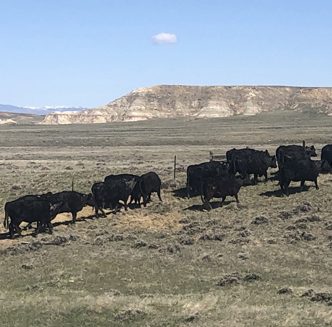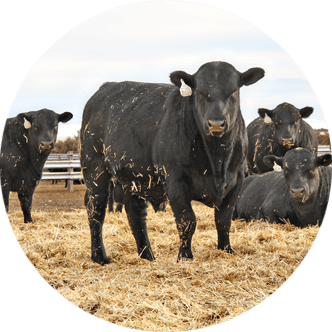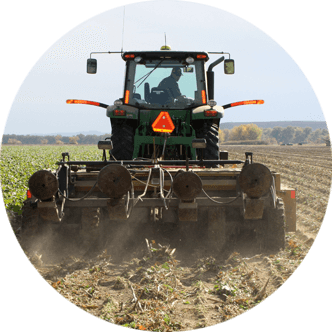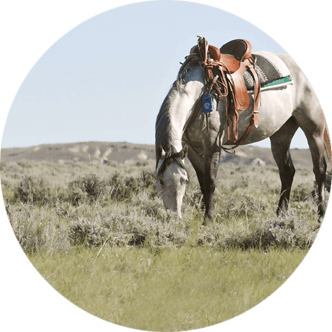Wyoming grazing permit holders fight back
Thousands of Wyoming ranchers hold permits to graze their livestock on federal land managed by the Bureau of Land Management (BLM) and the U.S. Forest Service (USFS).
On Feb. 5 at the Fremont County Fairgrounds, two dozen permittees gathered to better understand their rights, risks and relationships with land managers.
“These days, permitting processes are a bit more scrutinized than they have been in the past,” said Wyoming Department of Agriculture (WDA) Senior Policy Analyst Justin Williams to attendees. “I don’t want to scare you, but I do want to inform you.”
In a 45-minute crash course, Williams coached the permit holders on how to become active participants in a renewal process required to maintain access to federal allotments.
He repeatedly warned of “anti-grazing nonprofit organizations” which are “serious about trying to take permits away.”
“Amongst ranchers, governmental permitting processes have a reputation for being slow moving, laborious and difficult to understand,” he said.
As an antidote for potential confusion, Williams urged his audience to establish relationships with the BLM or the USFS – whichever agency issues their permit.
“You as the permittee have every right to ask to see everything in your file,” said Williams. “You don’t necessarily want to go in guns blazing, but you do want to know exactly what’s in there so you can ask questions and plan ahead.”
Specifically, Williams encouraged permit holders to check their files for hints certain “nefarious non-governmental organizations (NGOs)” have been “monitoring their allotments for violations.”
Active grazing permits don’t change a land parcel’s public status, and people are generally free to monitor livestock impacts during and after grazing. If this monitoring is completed per the managing agency’s criteria for legitimacy, it will be entered into the associated file and considered when the permit is up for renewal.
As an example, Williams singled out Idaho-based Western Watersheds Project (WWP) as an “anti-grazing” organization which “has been recently active in Fremont County.”
The stated mission of the WWP is to “protect and restore western watersheds through education, public policy initiatives and legal advocacy.”
All grazing permit holders are required to abide by allotment-specific guidelines related to air, soil and water quality, wildlife habitat and riparian vegetation. If violations are revealed and filed, the issuing agency can rescind the permit.
“It’s no joke,” said Williams, as many listeners nodded. “NGOs are serious about trying to take your permit away and they will use case law to do it.”
While there isn’t a direct way for permit holders to purge unwanted third-party data and letters of noncompliance from their files, Williams noted being aware of such inclusions can “help permittees navigate a renewal process and achieve the best possible outcomes.”
In addition to the general advice to stay vigilant and informed, Williams offered guidance for navigating the numerous steps required for permit renewal.
Prior to reissue, livestock grazing permits are subject to a National Environmental Policy Act (NEPA) process which involves data collection, a thorough review of the existing file and a public comment period.
“It is imperative you actively participate in this process,” urged Williams. “Voice your concerns with current management and identify changes you believe would benefit your allotment going forward.”
In Fremont County, many grazing permits include special livestock rotation requirements to account for priority sage grouse habitat as outlined in BLM or USFS management plans.
According to the U.S. Department of Agriculture, Greater sage grouse have suffered an 80 percent range-wide decline since 1965. Areas identified as “core sage grouse population areas” often overlap with grazing allotments, resulting in strict regulations and restrictions.
When Williams asked which ranchers in the room held permits on these “core” areas, the majority raised their hands.
In the latter stages of a NEPA process, the permit issuing agency develops a variety of possible outcomes or “alternatives” for the allotment’s future.
In most cases, these alternatives include a no-changes option labeled “current management” and a modified plan known as “proposed action.”
Before making a final decision, the agency will consider all information in the allotment file, plus relevant public comments, historical information and supporting documents. The process often takes years to complete – or longer if the agency’s decision is challenged.
“After a final decision from the BLM, you have 30 days to appeal,” Williams said.
For an equivalent forest service process, permittees have 45 days to appeal and make a request for mediation.
Once again seeking to help ranchers in attendance understand the technical nature of the permit renewal process, Williams offered advice on how to best pursue appeals, protests and mediation.
“If there are decisions coming down that are adverse to your permit, incorporate the WDA to help you,” he advised. “If you know you’re struggling, pick up the phone, and we’ll see what we can do.”
Austin Beck-Doss is a reporter for the Lander Journal and Riverton Ranger. This article has been reprinted through the Wyoming News Exchange.





